Impressive Buddhist Mural Paintings
Dambulla Golden Rock Cave Temple is a vast isolated rock mass 500 ft high with 1.6 kilometre around the base. The impressive Rock Temple dating to the first century B.C is found here. The caves of Dambulla sheltered King Walagamba during his 14 years of exile from Anuradhapura. When he regained the throne, he built the most magnificent of Rock Temples to be found on the island. The complex consists of five caves with over 2000 square metres of painted walls and ceilings. It is the largest area of paintings found in the world and it is a UNESCO World Heritage site. In the first cave is a recumbent image of the Buddha 14 metres long, cut out of the Rock. There are images of deities associated with Buddhism all around. The frescoes on the ceiling date back to the 15th – 18th centuries. In the second cave, the finest and the largest of all, there are 150 life-size statues of Gods from the Buddhist religion along with numerous images of the Buddha himself.
The Sacred Apex of Art and History: Rangiri Dambulla Cave Temple (A UNESCO World Heritage Site)
Discover the Dambulla Cave Temple, also known as the Golden Temple of Dambulla, Sri Lanka’s largest and best-preserved cave temple complex. A journey here is a profound experience, tracing the footsteps of ancient royalty and witnessing two millennia of continuous Buddhist devotion preserved in magnificent rock art.
Overview: A Sanctuary Carved in Stone
Perched atop a massive 160-meter-high granite outcrop, the Dambulla Cave Temple is a spectacular spiritual and artistic masterpiece. Since the 1st Century BC, these five main caverns have been meticulously transformed into shrine rooms by ancient kings, creating a breathtaking tableau of history, sculpture, and mural painting.
This site is a cornerstone of Sri Lanka’s famed Cultural Triangle and an essential pilgrimage for cultural enthusiasts and spiritual seekers alike.
Key Features & Unmissable Highlights
The complex consists of five main caves (Viharas), housing a staggering collection of 153 Buddha statues, three statues of Sri Lankan kings, and four statues of Hindu gods and goddesses (including Vishnu and Ganesha), showcasing the harmonious blend of religious traditions on the island. The ceilings and walls are covered in over 2,100 square meters of vivid frescoes, making it a living gallery of Buddhist art.
The Five Sacred Caves
- Devaraja Lena (Cave of the Divine King)
- The Colossus: Dominated by a magnificent 14-meter-long reclining Buddha statue, meticulously carved from the solid rock, representing the Buddha’s Parinirvana (final passing away).
- Artistic Detail: Notice the beautifully painted feet of the colossal statue and the traces of gold leaf that once entirely covered it. A statue of the Buddha’s chief disciple, Ananda, stands faithfully at his feet.
- Maha Raja Lena (Cave of the Great Kings)
- The Grandest: This is the largest and arguably the most spectacular of the caves, measuring over 50 meters in length.
- History & Art: It contains over 60 statues, including those of the two great kings who contributed most significantly to the temple’s preservation: King Valagamba (who first established the temple) and King Nissanka Malla (who gilded the statues).
- The Frescoes: Marvel at the intricate 18th-century Kandyan-style murals that cover the entire ceiling and walls, depicting key events from the Buddha’s life and Buddhist history.
- Sacred Water: An intriguing feature is a natural spring where water drips from a crack in the ceiling into a bowl, believed to possess healing powers and never to dry up.
- Maha Alut Viharaya (Great New Monastery)
- Vibrant Colours: This cave is celebrated for its highly preserved and colourful frescoes, which mainly date from the 18th-century Kandyan era.
- Magnificent Display: It houses over 50 Buddha statues, including a large, golden-painted seated Buddha figure.
- Paschima Viharaya (Western Temple)
- A smaller, yet impressive cave featuring a large seated Buddha in dhyana mudra (meditation pose) and a central dagoba (stupa).
- Devana Alut Viharaya (Second New Monastery)
- The newest and smallest cave, this chamber features brick and plaster statues, including a 10-meter reclining Buddha, and depictions of various Hindu deities.
Essential Travel Advice
| Feature | Details for Your Trip |
| History | Dates back to the 1st century BC, when King Valagamba used the caves for refuge before converting them into a temple in gratitude. |
| Viewpoint | The ascent to the caves offers stunning panoramic views of the surrounding countryside, including the distant visibility of the iconic Sigiriya Rock Fortress. |
| The Golden Temple | At the base of the rock, you will see the modern Golden Temple and Museum, identifiable by the massive golden Buddha statue at its entrance. (Note: The main cave temples are at the summit). |
| Access | Access involves a moderate climb up a gentle, well-maintained set of steps. Allow 15–20 minutes for the ascent. |
| Dress Code | As an active place of worship, all visitors must remove their shoes and hats before entering the cave complex. Shoulders and knees must be covered. |
| Best Time to Visit | Visit early in the morning to avoid the midday heat and the main crowds. Remember to bring socks to protect your feet from the heat of the rock surface. |
The Rangiri Dambulla Cave Temple offers a truly immersive journey into Sri Lanka’s spiritual heart, where every painted ceiling and carved rock face tells a sacred story spanning millennia.
Local Hotels

Unsure Where To Start?
Let’s talk about your Earth Trip


Our travel specialists are seasoned explorers with deep local insights. Whether it’s uncovering hidden gems or planning immersive cultural experiences, we design trips that go beyond the ordinary. Get in touch today!
Request A Video MeetingOther Popular Experiences












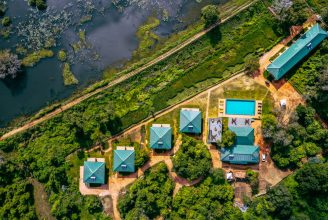
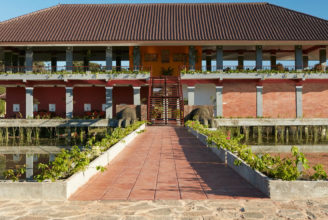

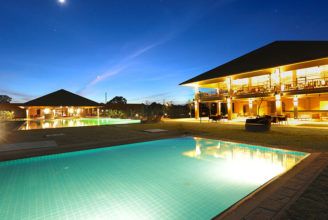

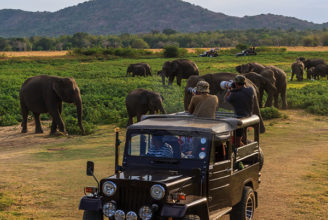
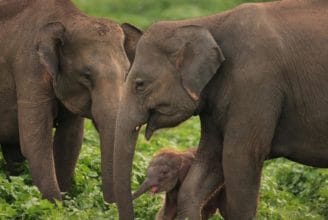
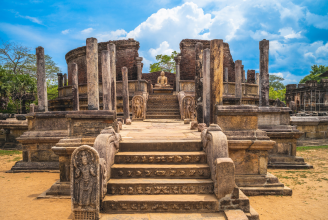
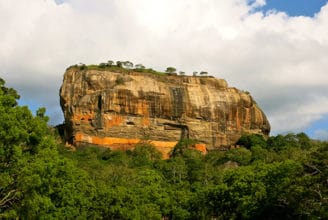
 Dambulla Cave Temples
Dambulla Cave Temples